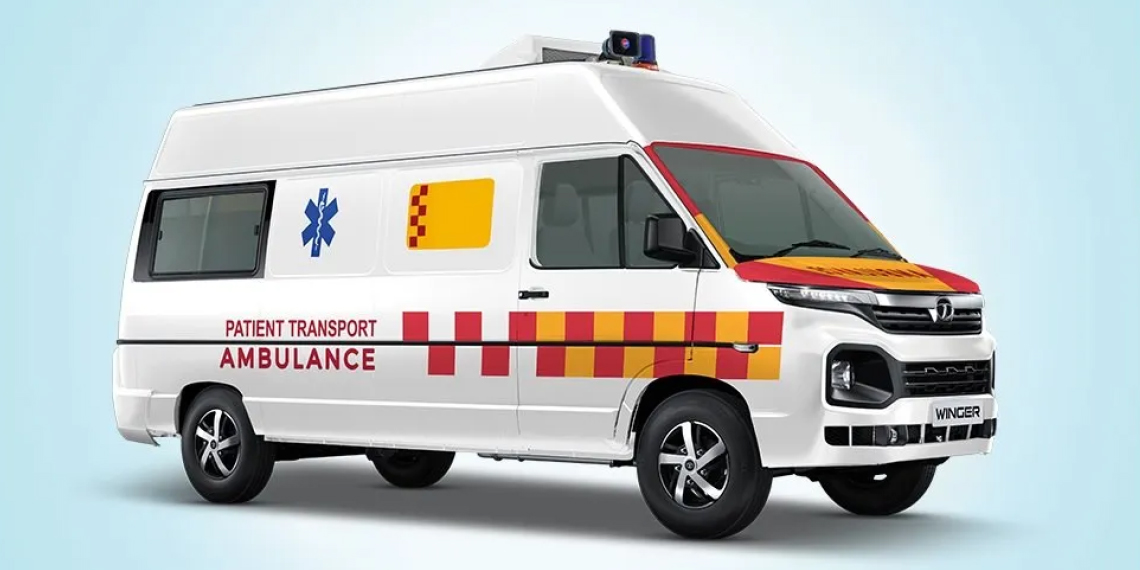The medical equipment onboard an ambulance helps in the immediate treatment of respiratory issues, heart attacks, broken bones, and burns. Hundreds of non-emergency ambulances are also can be found in major cities.
An ambulance may use a lot of small supplies like bandages or cold packs during a full-day assignment such as a sports competition, concert, or festival, or they may be busy maneuvering through traffic to deliver patients.
The following are five major and seemingly underrated qualities that will make an ambulance underrated:
Power while traveling
- The ambulance's electrical systems are essential to survival. As consumers, we frequently underestimate the relevance of batteries in providing emergency services, but operative specialists can attest to their significance.
- While rescue equipment consumes the greatest electricity, only a handful of rescue devices are in use during a particular time. This lowers the overall electrical consumption. When a patient is admitted to the ambulance, all of the vehicle's lights, including the inside patient cabin, regular driving lights, and emergency flashers, turn on.
- There is also a substantial chunk of the air conditioning area that is always operating, which contributes to a significant amount of constant power usage.
Auxiliary heating and cooling
- The advanced temperature control systems in patient transport ambulances, rescue vehicles, and special-purpose ambulances maintain optimal temperatures for all passengers, not just the patients in the patient compartment. First-rate heating and cooling solutions also allow rescue personnel to focus completely and perform to their maximum potential.
- Apart from the fundamentals, auxiliary heating, ventilation, and air conditioning (HVAC) equipment may save fuel, reduce emissions, and keep the ambulance cab and compartment at a comfortable temperature.
- The best solution will be determined by the kind of vehicle and compartment. It is also critical to evaluate the regulatory environment, since certain regions may not require all of the available supplementary functions.
Internet accessibility
- The most effective approach to interact with the department's intranet, dispatch information, and complete electronic patient care reports is to establish digital networks at an all-day posting (PCRs).
- Moving a unit to a place without internet access involves additional effort at the conclusion of a shift to submit PCRs and analyze emails sent throughout the day.
- Take advantage of technologies' expanding ability to connect and synchronize through the internet. When Bluetooth and internet connectivity are integrated into patient care equipment such as heart monitors, information may be sent to other health care practitioners and synched to patient records quickly.
Temperature-controlled storage
- According to research, keeping meds outside of their authorized temperature ranges might reduce their efficacy and stability. Keeping medications in a steady atmosphere can help to extend their shelf life and efficacy.
- Standard 203.03.04 of the Commission on Accreditation of Ambulance Services was issued in order to develop storage policies and procedures to preserve medicine against excessive temperature fluctuations.
- Parking in climate-controlled areas, rotating stock, portable pharmaceutical cases, and coolers are all possibilities; however, electronic, climate-controlled storage maintains a proper, consistent temperature while requiring little human interaction.
- Furthermore, certain storage rooms are not only climate-controlled but also feature restricted access, even customized access, enhancing accountability and security of controlled chemicals.
Space when you require it the most
- EMTs and paramedics are in desperate need of greater space in the vehicle. They want greater legroom, as well as a spot to put a cooler filled with water and food, as well as a bag containing extra hand warmers, gloves, and other cold-weather gear.
- A few challenging things to consider in ambulance design. Specifications raise the cost. The installation of extra equipment impacts gross vehicle weight, which influences fuel efficiency. Moreover, all safety criteria must be fulfilled or surpassed.
Ambulance on call
Ambulance on Call is an advanced non-emergency medical transportation provider throughout Chennai that targets and satisfies all types of people's medical transportation needs, with a focus on senior adults.
Ambulances are commonly misunderstood to be solely for emergency medical requirements. But, Ambulance on Call's ambulance services is not limited to medical situations.
Ambulance on Call strives to deliver advanced patient transportation in a unique and individualized manner, while also ensuring safety and optimum comfort during medical care. If your seniors need any non - emergency services, kindly visit Ambulance on call.



